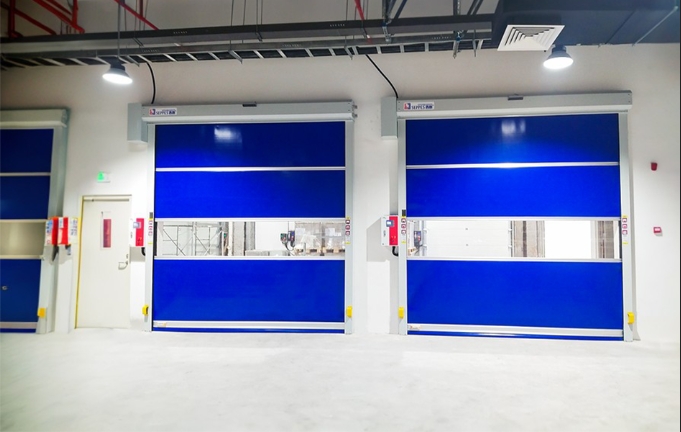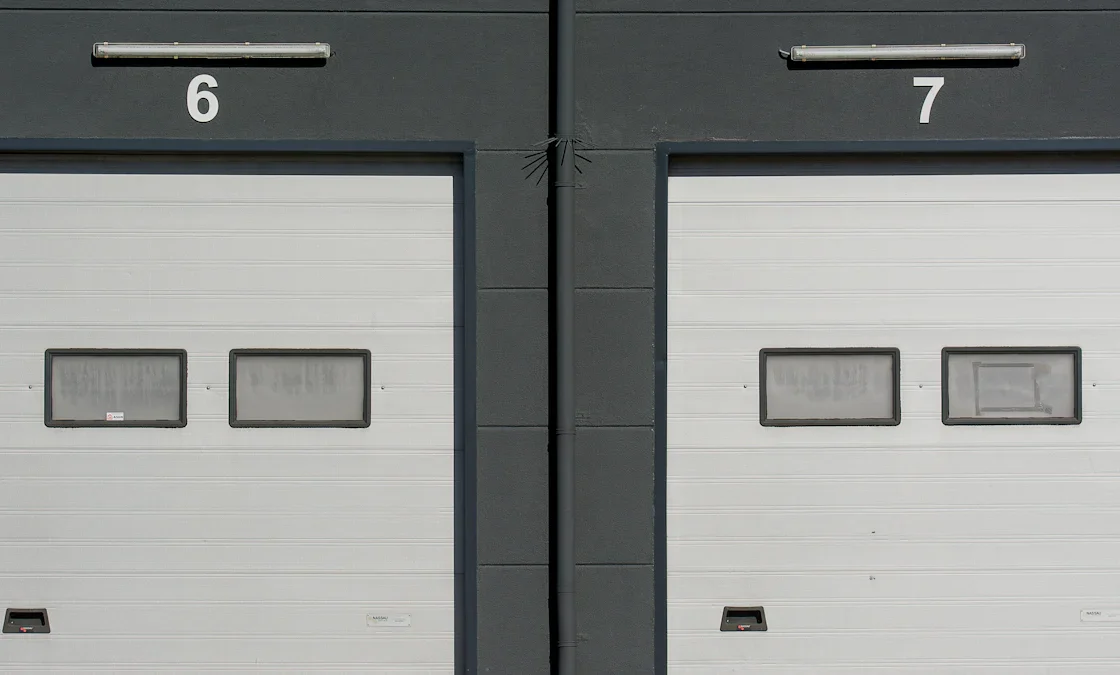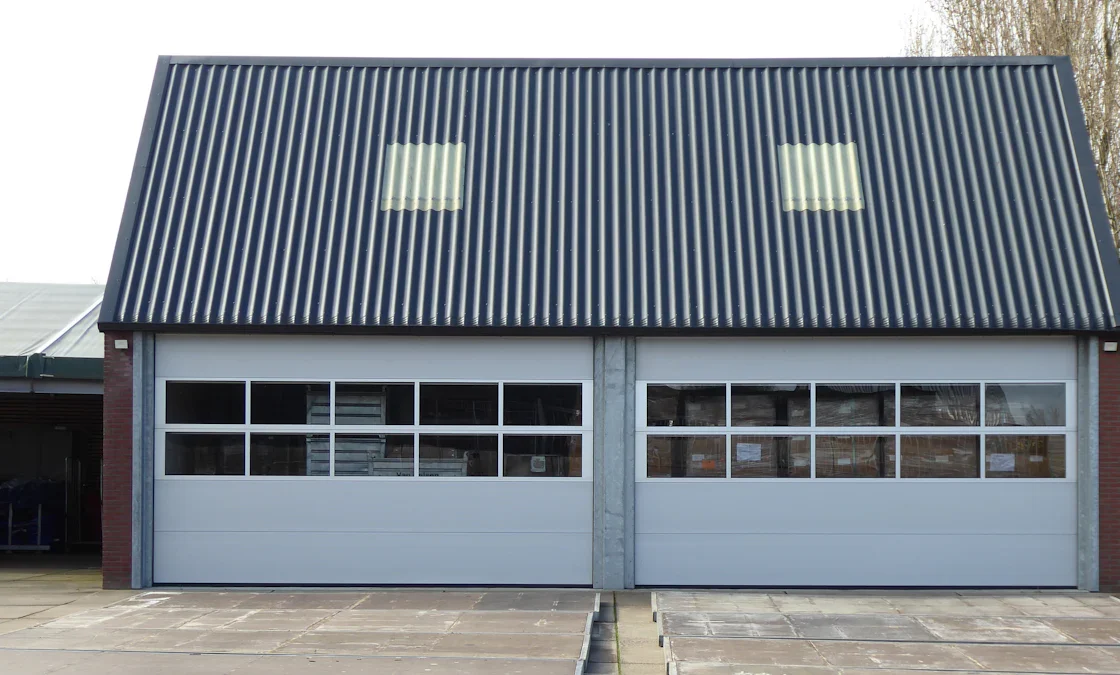Choosing the right Workshop Entrance Door holds significant importance. A well-selected door ensures safety, efficiency, and comfort in the workplace. Industry Experts emphasize the need for quality doors to meet these criteria.
“Choosing quality Workshop Entrance Door is essential to ensuring safety, efficiency, and comfort in the workplace.”
Security features play a crucial role. Features such as fire, explosion, and burglary protection safeguard the workshop environment. Equipment like safety sensors and emergency stop buttons ensure timely responses during emergencies.
Consider the Purpose of the Workshop Entrance Door
Functionality
Daily Usage Requirements
Selecting the right Workshop Entrance Door involves understanding daily usage requirements. Frequent opening and closing demand a door that can withstand constant use. Heavy-duty materials like steel or aluminum provide durability. These materials resist wear and tear, ensuring longevity.
Accessibility Needs
Accessibility needs also play a crucial role. A Workshop Entrance Door should accommodate all users, including those with disabilities. Wide doors and automated systems enhance accessibility. These features ensure smooth and efficient operations within the workshop.
Aesthetic Appeal
Matching the Workshop’s Design
Aesthetics matter when choosing a Workshop Entrance Door. The door should match the workshop’s design. Consistency in design enhances the overall look of the workshop. A well-matched door creates a cohesive and professional appearance.
Enhancing Curb Appeal
Enhancing curb appeal is another consideration. A visually appealing Workshop Entrance Door attracts attention. It reflects the quality and professionalism of the workshop. Investing in a stylish door boosts the workshop’s exterior appeal.
Material Selection for Workshop Entrance Door

Durability
Weather resistance
Selecting the right material for a Workshop Entrance Door requires considering weather resistance. Steel doors offer excellent durability and do not expand or contract with changing weather conditions. Aluminum doors resist corrosion, making them suitable for humid environments. Fiberglass-composite doors mimic wood but provide superior resistance to weather elements. These materials ensure the door withstands harsh environmental conditions.
Wear and tear
Durability against wear and tear is crucial for a Workshop Entrance Door. Steel doors provide exceptional strength and security, making them ideal for high-traffic areas. Aluminum doors also offer durability and are lightweight, reducing strain on hinges and frames. Fiberglass-composite doors resist dents and scratches, maintaining their appearance over time. These materials reduce maintenance costs and extend the door’s lifespan.
Maintenance
Ease of cleaning
Ease of cleaning is an important factor when choosing a Workshop Entrance Door. Steel doors require minimal cleaning and can be wiped down with a damp cloth. Aluminum doors are easy to clean and maintain, resisting stains and dirt buildup. Fiberglass-composite doors are virtually maintenance-free, requiring only occasional cleaning to keep them looking new. These features ensure the door remains presentable with minimal effort.
Long-term upkeep
Long-term upkeep is essential for maintaining the functionality and appearance of a Workshop Entrance Door. Steel doors need regular inspections to prevent rust and ensure proper operation. Aluminum doors require periodic checks to maintain their corrosion resistance. Fiberglass-composite doors need little to no maintenance, providing a hassle-free option. These materials offer varying levels of upkeep, allowing for informed decisions based on maintenance preferences.
Security Features of Workshop Entrance Door

Locking Mechanisms
Types of locks
Selecting the right Workshop Entrance Door involves choosing effective locking mechanisms. Deadbolt locks provide a high level of security. Mortise locks, often used in commercial settings, offer durability and strength. Keyless entry systems, such as electronic keypads, enhance convenience and security.
Installation tips
Proper installation of locks ensures maximum security for a Workshop Entrance Door. Align the lock with the door frame to prevent tampering. Use long screws to secure the strike plate firmly. Reinforce the door jamb to withstand forceful entry attempts. Professional installation guarantees that the locks function correctly.
Reinforcement Options
Additional security measures
Enhancing the security of a Workshop Entrance Door requires additional measures. Install security bars or grilles to deter unauthorized access. Use door sensors to monitor entry points. Safety sensors and emergency stop buttons ensure timely responses during emergencies. Fast spiral doors and sectional doors, made from metal materials, provide strong anti-theft features.
Professional installation
Professional installation of security features ensures optimal protection for a Workshop Entrance Door. Experts can install airbags and emergency handbrake devices at the bottom of the door. These features protect users in case of emergencies. Reputable brands like Hörmann and Seppes offer high-quality industrial doors recognized for their security and durability.
Insulation and Energy Efficiency
Insulation Materials
Types of insulation
Selecting the right insulation material for a Workshop Entrance Door enhances energy efficiency. Common insulation materials include polyurethane foam, polystyrene, and fiberglass. Polyurethane foam offers high thermal resistance and structural strength. Polystyrene provides excellent moisture resistance and lightweight properties. Fiberglass delivers superior soundproofing and fire resistance.
Benefits of insulated doors
Insulated Workshop Entrance Doors offer several advantages. Insulated doors maintain a consistent indoor temperature, reducing heating and cooling costs. These doors also minimize noise pollution, creating a quieter work environment. Enhanced durability and structural integrity result from the use of high-quality insulation materials.
Energy Savings
Reducing energy costs
Energy-efficient Workshop Entrance Doors contribute to significant cost savings. Proper insulation reduces the need for excessive heating or cooling. Lower energy consumption translates to reduced utility bills. Investing in energy-efficient doors proves cost-effective in the long run.
Environmental impact
Energy-efficient Workshop Entrance Doors positively impact the environment. Reduced energy consumption lowers greenhouse gas emissions. Sustainable materials used in insulated doors contribute to eco-friendly practices. Choosing energy-efficient doors supports environmental conservation efforts.
Budget Considerations
Cost vs. Value
Initial investment
Selecting a Workshop Entrance Door involves an initial investment. High-quality doors, such as those made from steel or aluminum, often come with a higher price tag. However, these materials offer superior durability and security. Investing in a robust door ensures long-term performance and reduces the need for frequent replacements.
Long-term savings
Long-term savings should be a key consideration. Durable materials like steel and aluminum require less maintenance. This reduces ongoing costs. Energy-efficient doors, such as insulated doors, lower heating and cooling expenses. Over time, these savings offset the initial investment. A well-chosen door proves cost-effective in the long run.
Financing Options
Payment plans
Financing options can ease the financial burden of purchasing a Workshop Entrance Door. Many suppliers offer payment plans. These plans allow for spreading the cost over several months. This makes high-quality doors more accessible. Reputable brands often provide flexible financing solutions.
Budget-friendly choices
Budget-friendly choices do not necessarily mean compromising on quality. Options like PVC doors offer durability at a lower cost. These doors resist wear and tear, making them suitable for busy workshops. Additionally, some suppliers offer discounts on bulk purchases. This can be beneficial for larger workshop projects.
“Finding the balance between performance and price is crucial when choosing the best workshop door.”
Considering both cost and value ensures a wise investment. Proper budgeting allows for selecting a door that meets all requirements. This includes functionality, security, and aesthetics.
Recapping the five tips for selecting the right Workshop Entrance Door:
- Consider the purpose, focusing on functionality and aesthetic appeal.
- Choose durable materials that resist weather and wear.
- Prioritize security features like robust locking mechanisms and reinforcement options.
- Opt for insulated doors to enhance energy efficiency.
- Balance cost with value, considering both initial investment and long-term savings.
Choosing the right Workshop Entrance Door ensures safety, efficiency, and a professional appearance. Applying expert advice leads to informed decisions. As one satisfied customer noted:
“The personalized attention and dedication to your students before, during, and after training is incredible.”
Investing in a high-quality Workshop Entrance Door proves beneficial for any workshop environment.





















